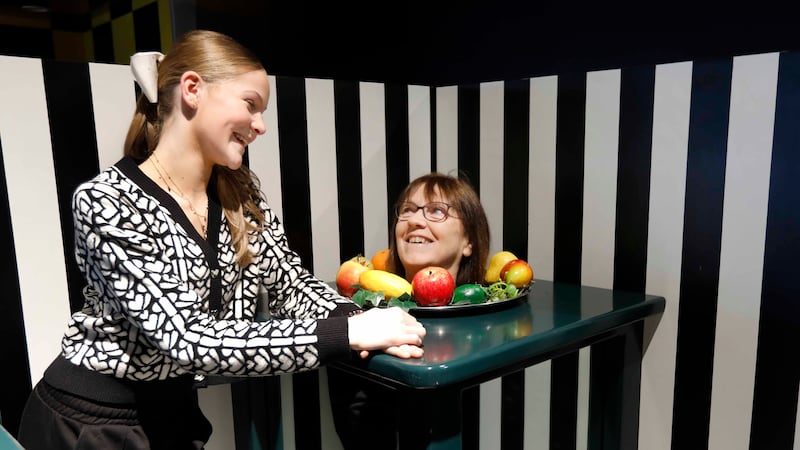Researchers have found bacteria that are resistant to antibiotics in sewage being discharged from our hospitals and homes into the natural environment.
This has raised concerns, given the potential for these bacteria to share drug-resistance genes with micro-organisms in the environment, something that could not have happened before such antibiotics came into widespread use.
The researchers from NUI Galway and University College Dublin also found antibiotic drugs in sewage being discharged into water courses. These still-active drugs have the potential to promote antibiotic resistance in organisms found in nature.
The research, which was published today by the Environmental Protection Agency, sought to learn more about how antibiotics get into the environment and to look for possible effects on human health, says Prof Martin Cormican of NUI Galway, who led the effort.
“We wanted to look at how that resistance spreads into the wider environment and how that might cause harm,” he says.
His group at the Centre for Health from Environment at NUIG's Ryan Institute had been studying this for several years and wanted to expand its efforts. This came when the agency opened a research call and the Galway team won funding.
Dr Dearbháile Morris of Galway's Antimicrobial Resistance and Microbial Ecology Group served as lead author and co-investigator and Dr Enda Cummins of UCD's school of biosystems engineering joined as a co-investigator.
Both Morris and Cormican stressed that the overall risk to human health was very small, but the research confirmed that antibiotic-resistant organisms are being discharged not just in untreated sewage but also in sewage that has gone through treatment to reduce microbes.
The researchers carried out laboratory measurements for E.coli bacteria, widely used as an indicator organism. They also conducted a look back through 161 earlier research papers and used computer modelling to reach their conclusions, Morris says.
“The risk to human health is very small because of dilution effects, but there are antibiotic-resistant bacteria in the sewage,” she says. Some were resistant to older antibiotics, but there were also organisms that had developed resistance to the very latest drugs as well.
The fact that active antibiotic drugs were found in the sewage is also important. “When bacteria are exposed to antibiotics, they develop resistance. The newer drugs don’t break down quickly [but] persist on an active basis that lets them remain available so that the bacteria in the environment are more exposed,” says Morris.
The team examined sewage coming from a hospital and also sewage from an urban system that did not include hospital waste water, says Prof Cormican. Both waste streams carried micro-organisms that had resistance genes.
The study also showed that although pre-treatment before discharge could reduce the burden of resistant bacteria, it did not eliminate them completely, he says.
“It looks like it is pretty effective, but a new report shows that many authorities don’t treat sewage. It just shows how important it is not to discharge raw sewage,” he says.
Implications
The combination of drug discharges via urine and faeces and the presence of E.coli with established resistance genes could have downstream implications, the research suggests.
The drugs could stress bacteria, and these bacteria might pick up resistance genes in subsequent DNA swaps. “We know genetic exchange happens fairly freely across organisms,” Prof Cormican says. “Some E.coli genes will transfer into other organisms. Even if it happens rarely, it is a Pandora’s box. If it goes into wild aquatic organisms, that is a pathway for that resistance gene into humans.”
This is where a risk assessment is important. Sewage effluent is quickly diluted as it enters a river, so human exposure risk is very low. If secondary treatment has been applied, it is lower still.
Other doubts remain, Prof Cormican says. “What are the impacts on biodiversity in the microbial world?” Such effects could eventually become a threat to human health if a harmless organism were to become an infectious agent.
A more sensible approach to the use of these important drugs would also help, Morris says. “Antibiotic resistance develops because of exposure, so there is an onus on everyone, including the public, to use antibiotics more wisely.”
HEALTH EMERGENCY: ANTIBIOTIC OVERUSE
The rise of antibiotic resistance in bacteria is a worldwide public health emergency, say the researchers involved in a study funded by the Environmental Protection Agency.
When first introduced, antibiotics were a wonder drug that saved millions of lives, but decades of overconsumption and improper use have rendered many of them useless.
On any given day, about one in three patients in a major hospital is taking antibiotics, the researchers say.
More than 100 tons of antibiotics of all kinds were used in Ireland for people and animals during 2013, up from 97.4 tonnes in 2012 and 85.2 tonnes in 2011.
Our bodies do not break down all the antibiotics we take, so active antibiotic agents in urine and faeces find their way into the natural environment.
Once in the environment, the antibiotics can affect bacteria in water, and over time can cause an increase in the number of organisms that have developed antibiotic resistance.
One way they do this is by sharing genes, says Dr Dearbháile Morris, an investigator in the research project. If bacteria become stressed due to the presence of antibiotics, they can pick up genes from other bacteria to help them survive.
“Genes – including resistance genes – can be acquired in DNA from other organisms. It is easy to move DNA between organisms if they are stressed. Some studies show amplification of antibiotic resistance due to the transfer of genes,” she says.
The research team readily found organisms with resistance genes in waste-water discharges in both treated and untreated sewage.
Proper sewage treatment reduces these bacteria.
















